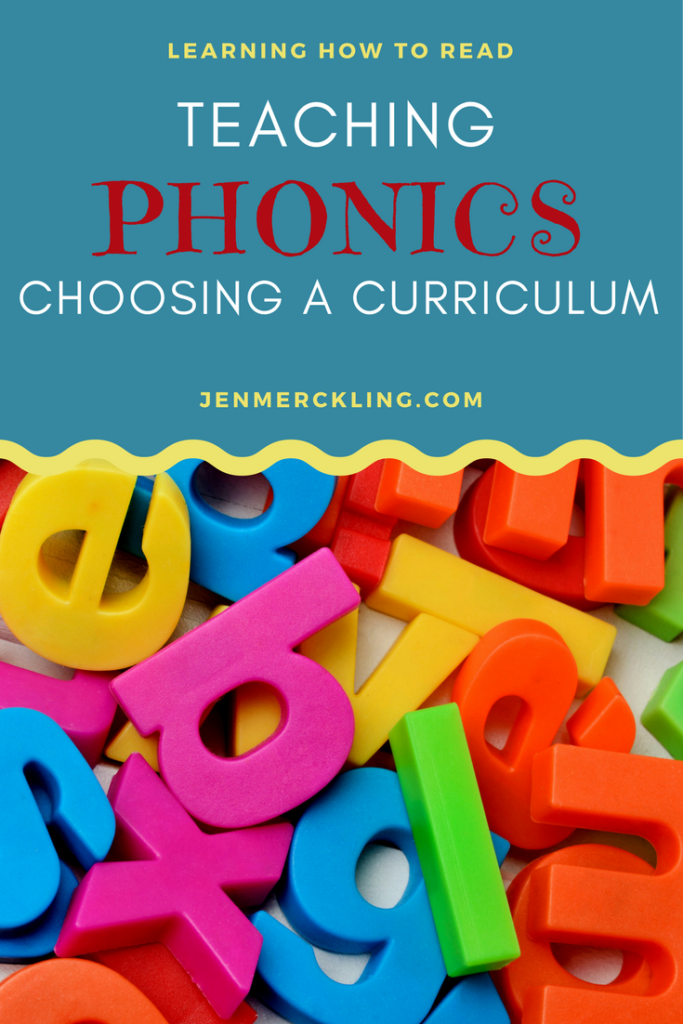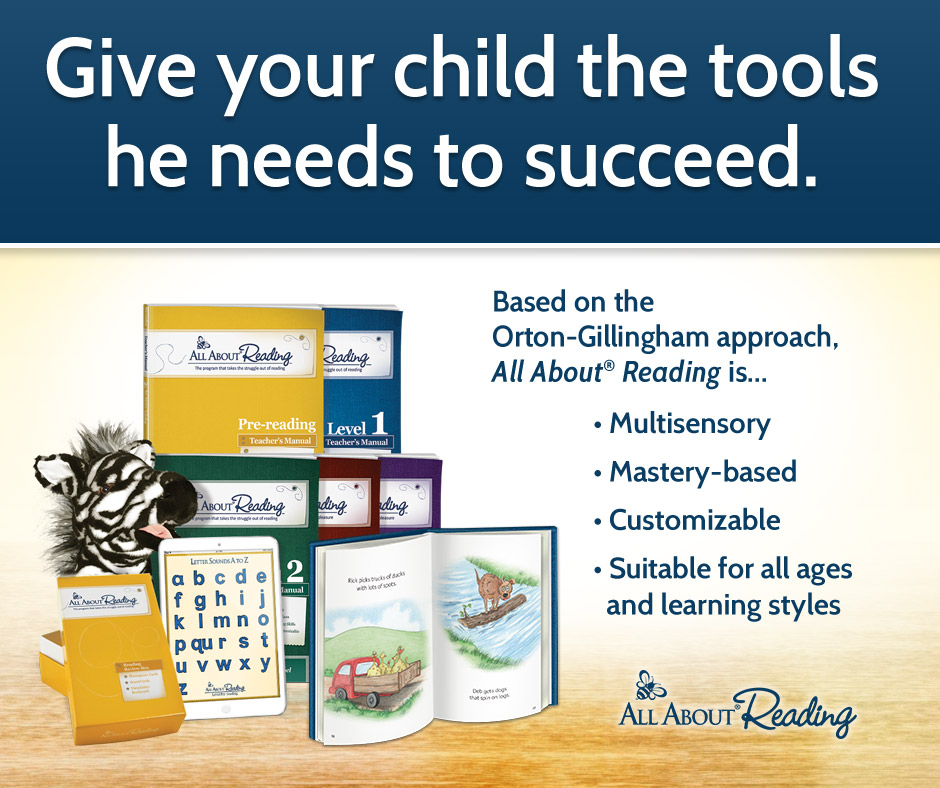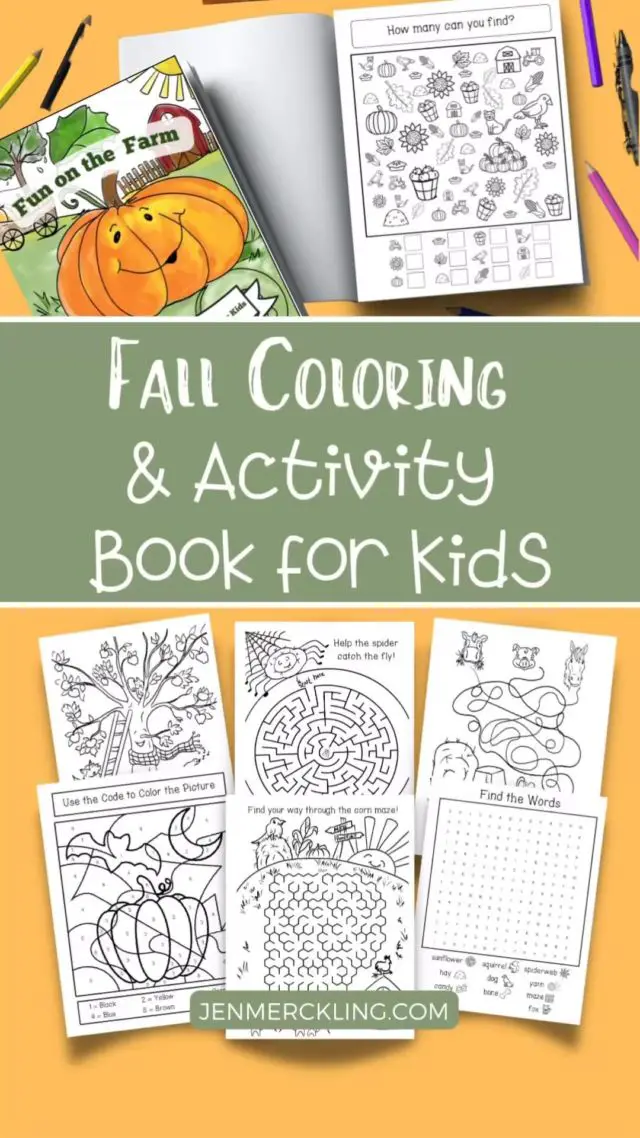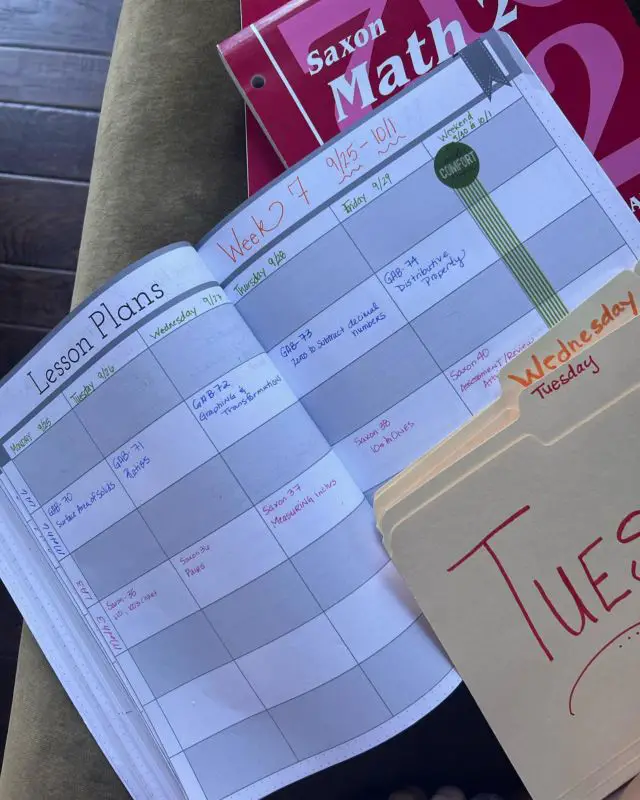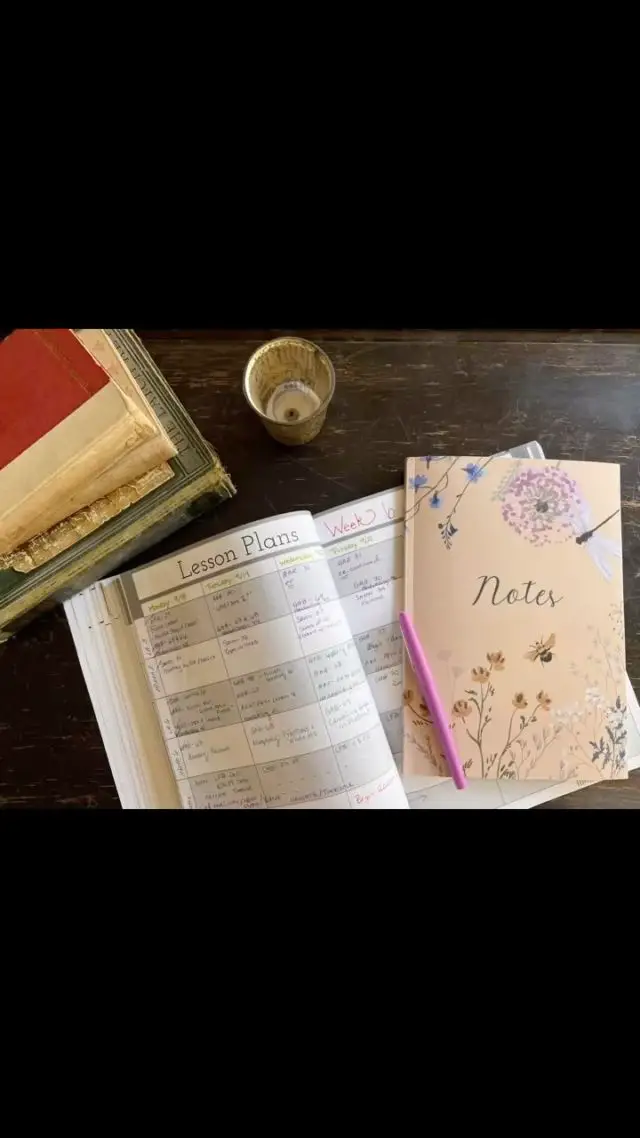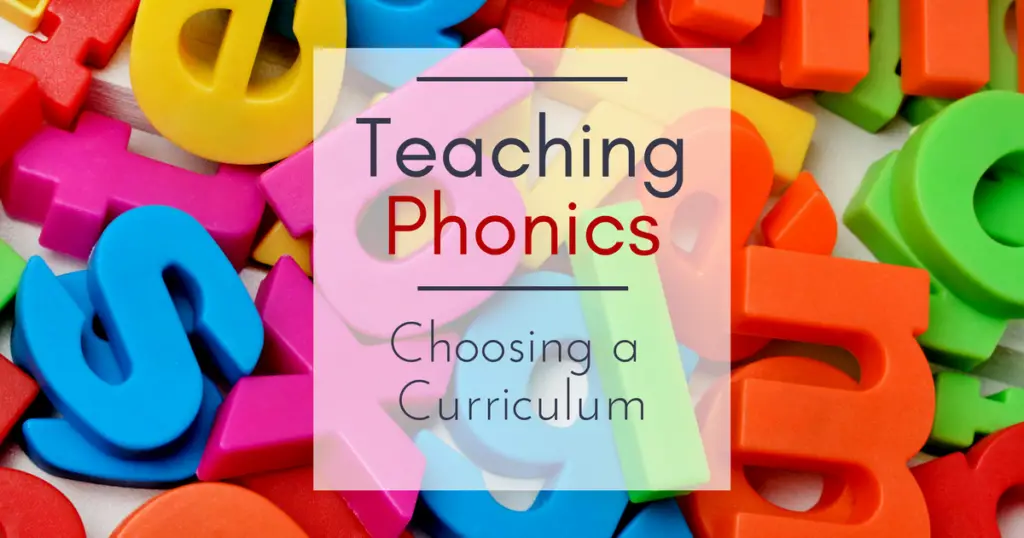
I bought my first phonics curriculum 20+ years ago–I think it was actually one of my very first homeschool purchases! I firmly believe that reading and math are the most foundational academic subjects for young students (Pre-K through 3rd graders). So I knew it was important to choose an excellent beginning phonics curriculum! And there are some really great programs available… Today I’m sharing 5 characteristics of an effective phonics curriculum to help you choose the best phonics curriculum for you!
Keep these in mind when choosing your curriculum–I know you’ll make the perfect choice for your family!
As a side note, I think it’s important to teach phonics in the context of a language rich home–filled with great stories, read-alouds, and shared reading experiences. Most homeschoolers I know are all hoarding books, and this is not a problem for us! Library fines on the other hand…
5 Characteristics of an Effective Phonics Program:
1) Systematic
The curriculum should be incremental, sequential, and teach phonograms (a fancy word for sounds and the corresponding letters/group of letters). At first glance, it may seem logical to teach letters in alphabetical order. However, I prefer a more systematic approach. For example, my curriculum, Ready for Reading teaches one letter per week…The first 6 weeks are ordered this way: A, M, T, S, I, P.
And then something really exciting happens! At Week 6, the first leveled reader is introduced with words like “Pat,” “Tim” and “Sit.” Kids experience the thrill and success of independently reading their very first book in just 24 lessons! Only letters and sight words that have been previously introduced appear in the readers. I love the incremental growth and platform for success leveled readers provide.
2) Variety of Learning Modes
Not only do young children learn in unique and individual ways—they also have short attention spans (maybe you’ve noticed)! Choose a curriculum with activities to compliment a variety of learning styles—visual, auditory, verbal, and kinesthetic. Incorporating all these learning modes into your lesson helps solidify the learning, which is helpful for all young readers and has been shown especially beneficial for kids with learning challenges like dyslexia.
Here’s how that might look in a typical lesson…For example, Ready for Reading lessons begin with an alphabet activity. Some days we jump to the alphabet, some days we point, some days we march–but a variety of learning styles are utilized. Next , we review every letter and sound that has been learned–first by identifying the letter (just a typical flash card) and then by using a picture flash card to reinforce the sound visually.
For example, let’s look at the letter F: We have a flash card with lowercase f–my child names the letter. When going through our picture flash cards, he sees a picture of a farm and the letter f–his goal is to give me the sound (usually easier than naming the isolated letter).
Additionally, when you choose a curriculum that engages different learning styles, your phonics lessons will have movement and energy! The variety keeps kids focused and positive! One of my top strategies for teaching reading is to keep the lesson moving (Read My Top 5 Reading Strategies). Switching up learning activities is key to keeping frustration at bay!
3) Flexibility
I love curriculum that offers extra games, activities, and practice—and that I’m totally free to pick and choose OR completely pass on them. Honestly, as a homeschool mom and teacher—this is always your prerogative! Remember your phonics lessons should be going 20-30 minutes MAX! I always follow the basic structure and flow of our lessons—but I’m not afraid to stray and supplement with activities that better meet our needs and interests.
Sometimes I substitute a worksheet with a more tactile learning experience—like writing in sand or simply writing on the whiteboard. There are tons of fun art projects (thank you, Pinterest) that correlate with letter learning—you can bet we are taking time to make some Letter M Monkeys! So choose a curriculum with a solid foundation—and one that allows you some freedom (or at least don’t be afraid to claim some for yourself)! Here’s a picture of my favorite game: Little Red Riding Hood from Ready for Reading…
4) Optional Spelling is Built In
No, I promise I did not give my sweet little kindergartener a full-on spelling test—but in a gentle way, I introduced spelling because I knew my child was ready. Some days he was expected to listen to a sound and then write the corresponding letter. Eventually he was expected to break down small words like “van,” and spell them with guidance. This integrated approach builds basic spelling skills, and perhaps more importantly, it begins making the important connection of reading to writing.
5) Rules and Patterns are Taught
When I started teaching my kids phonics, I was amazed at all the patterns and rules in our language! How totally cool! I was kind of geeking out over things like open and closed syllables, the rules for using the soft “g,” sound vs. the hard “g,” sound, and when to use “ck.” So many patterns! We often take them for granted because we’ve seen the pattern all our lives…When these rules and patterns are incorporated into our reading instruction, our kids experience greater success in both reading and spelling.
One more thought on patterns…Many math curriculums include lessons and activities focusing on patterns. Don’t skip over these, thinking they are more fluff than function! Recognizing and working with patterns, equips our kids to see patterns not only in math, but also in reading! Kids like patterns–use that language to help them see patterns in language.
I might say something like:
“You are so great at figuring out patterns…I’ve got a really cool pattern to show you about letters today!”
What are My Curriculum Choices?
Well of course, I love the curriculum I created, Ready for Reading (you could say I’m a little biased)!
I really appreciate straightforward, weekly lesson plans all on one page (it’s my attempt to be a minimalist where I can be)…So Ready for Reading teaches homeschool moms the flow of phonics lessons–but then provides one page weekly lesson plans. I also wanted to incorporate colorful, fun, hands-on activities! These are included along with assessment forms, games, and leveled readers!
With my oldest 3 children, I never continued formal phonics instruction with a complete curriculum beyond this level. Instead, we always supplemented with inexpensive Explode the Code workbooks for 1st and 2nd grade. If your child needs more intensive reading help, I would highly recommend continuing with a formal phonics curriculum beyond kindergarten. Orton-Gillingham based programs are going to include the characteristics I’ve shared with you.
My youngest 3 children have needed extra help with reading! (I believe they all have some level of dyslexia.) So I’ve needed to continue with a more extensive phonics program. For years, I heard great things about All About Reading. When my son was 8 years-old and still struggling–we went ahead and jumped into the curriculum…
It has been worth every penny.
Of all the homeschool curriculum purchases I’ve made over the last 20 years–this is hands down the very best. It surpassed my expectations and got my little guy reading at grade level–in fact now (age 13) he’s a great and avid reader.
My twin daughters are currently using it–I can’t even imagine homeschooling them without the program!
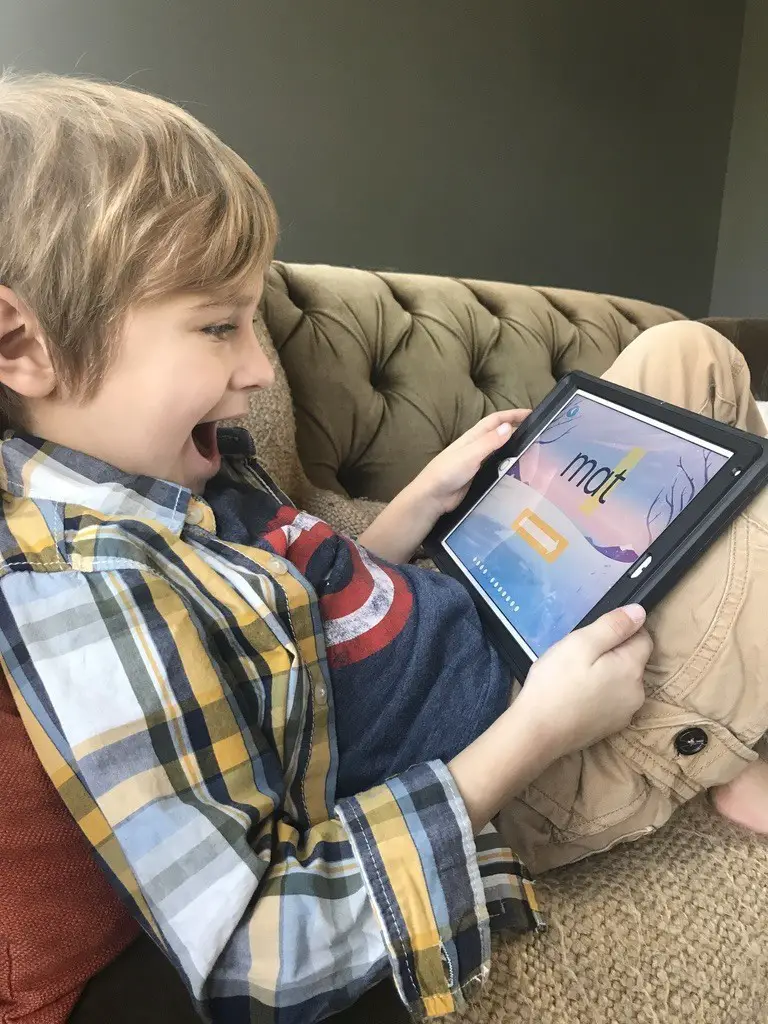
Additional Resources:
In case you missed it, here’s a link to my previous post, Best Way to Teach Reading–My Top 5 Strategies. Please let me know if you have any questions about reading instruction! (My email is jen@jenmerckling.com)
Keep up the important work, Sweet Friends! Reading progress (especially at the beginning) can feel like a snail’s pace…But your kiddo will get there, and you will be amazed! What a huge sense of accomplishment (for them and YOU)!!
With Love,
Jen xo

